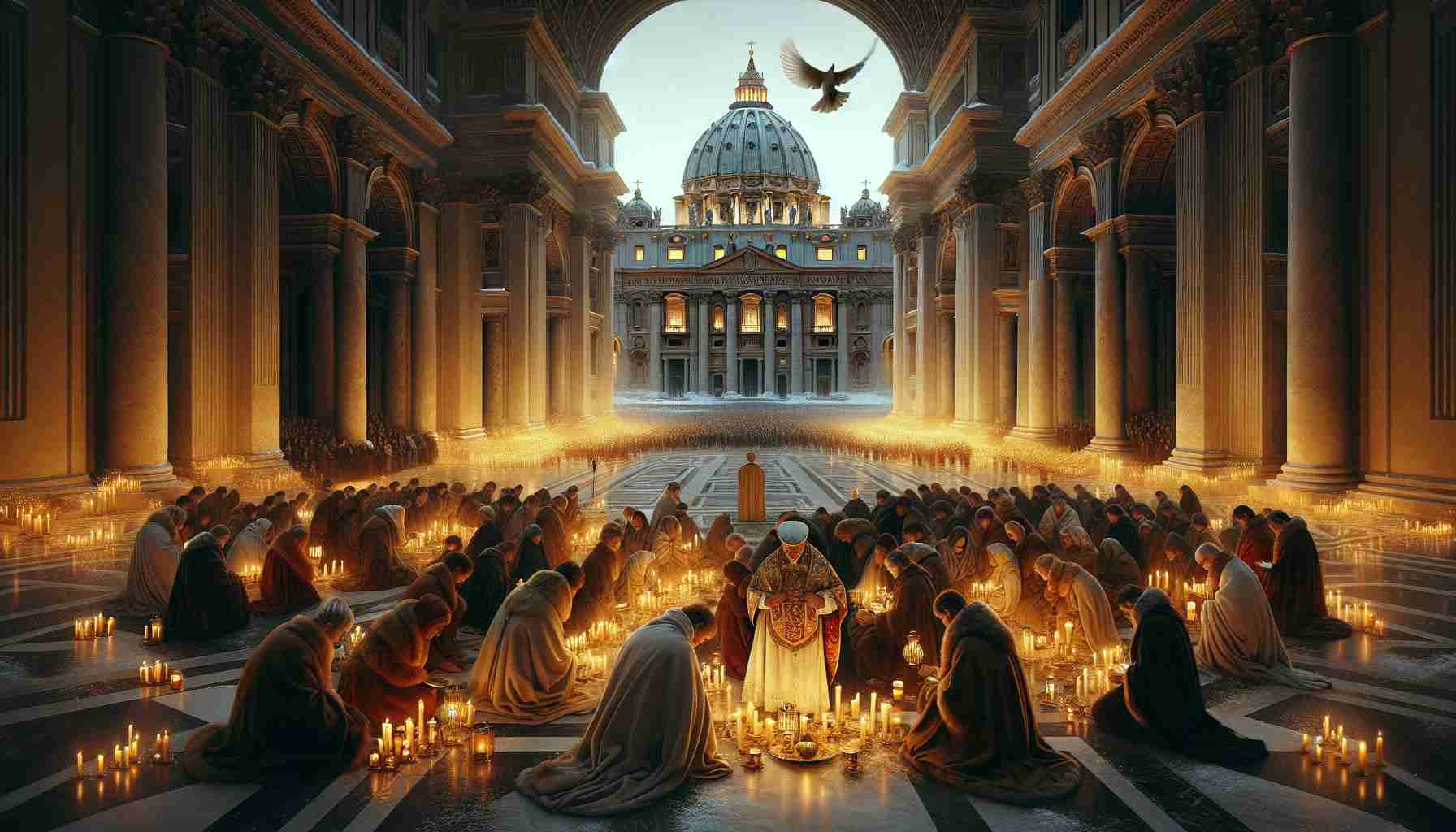

The bells of the Lateran Basilica tolled slow and deep, echoing against the winter stone of Rome. Word had passed swiftly through the city’s narrow, frost-laced corridors—Silvester, bishop of bishops, successor of Peter, was dead.
In the glow of oil lamps within the basilica’s nave, solemn voices began to chant Psalms: “For no one can lay any foundation other than the one already laid, which is Jesus Christ.” The verse, written years before in a Corinthian scroll by Paul, found life again in the legacy of a man who had refused the grandeur of emperors and instead knelt beneath a cross.
Outside, wrapped in the hush of twilight on this final day of the year 335, a group of Christian faithful gathered at the edge of a piazza. They whispered of Silvester’s humility, of his unwavering gaze when nobles pressured him, and of how, under his hand, the Church had been permitted to raise holy places on the very soil where once blood had soaked the dust of martyrs.
It was Constantine, the emperor himself, who had summoned the elderly bishop years ago—summoned but never commanded. They said Silvester had come not as a subject but as a man clothed in the authority of Christ. Under the painted arches of imperial halls, legend claimed he had spoken boldly to the ruler of an empire, explaining the Trinity as gently as a father teaching a son. And though scholars would later debate whether it was Silvester or another who baptized Constantine, the people believed. That faith became the cornerstone of his memory.
In the northern district near the Baths of Diocletian, a boy named Marcus knelt beside his mother beside a flickering lantern. “Who was he, truly?” he asked. She clasped his hand.
“He raised no sword,” she replied. “But churches—many. The Lateran, the first of them. Do you know what stands there?”
Marcus nodded slowly. “The throne of the bishop of Rome.”
“It was once a palace of emperors,” she said. “Now the house of God."
Indeed, before its consecration, the Lateran Palace had belonged to the family of Constantine. But the emperor had offered it to Silvester—offered it not out of obligation, but as homage. Under Silvester's leadership, it became the cathedral of Rome—a sanctuary sanctified by the bishop’s faith, not imperial blood.
In the catacombs beneath the city, where old bones of martyred saints rested in peace, acolytes with parchment recalled the Council of Nicaea. Though Silvester had sent legates and not gone himself, his hand steadied the Church far from Rome, reinforcing the creed that declared Christ “begotten, not made, of one essence with the Father.” That creed had weathered storms already—heresies pushed like waves against a breakwater. But Silvester’s trust remained always in God’s enduring foundation.
Even now, that foundation held, as saints' relics flickered beneath kindled tapers and pilgrims wept in quiet prayer.
As night deepened, the Basilica of Saint Sylvester on the Quirinal Hill took on a soft amber hue under torchlight. There, in quiet procession, priests carried the simple casket of the man who never owned a crown, but who bore the weight of the Church across his shoulders for over two decades. Though others gloried in martyrdom, Silvester had labored in peace. And in peace he passed.
Some streets over, a stonecutter named Gaius stood silently beside a newly laid monument outside the basilica precinct. He had chiseled it himself, bearing the inscription commemorating the 21st pope. He had done it not for money but gratitude.
“When I was sick,” he murmured to the air, “he prayed for me.”
Just then, a bitter wind blew from the Tiber, carrying with it faint sounds of distant singing—Kyrie Eleison—Lord, have mercy. The song was old. Older than empires.
Outside the city walls at the Priscilla catacombs, torchbearers descended into chill earth, following a path flanked with frescoes of fishes, loaves, and Christ the Shepherd. There, within the carved stone enclosure, the body of Silvester was laid beside saints of earlier centuries. No sumptuous tomb, no gilded marble. Only holy earth.
Night continued its slow descent, closing the year and a chapter in the Church's burgeoning story. Fires burned atop janual pillars and hearths, some still lit to honor the old gods. But in countless homes across the city, families now knelt before a simple wooden cross.
One boy fell asleep as his mother whispered prayers over him.
“To lead without fear,” she said to herself. “To live not for the crown of Rome, but the crown of righteousness.”
The dawn of a new year would rise, but Silvester’s work remained—etched in basilica foundations, echoed in creeds, and breathed in the bold prayers of those no longer hunted for bearing Christ’s name.
The Church, like a temple built upon rock, stood still in the heart of a city once sworn against it.
And the foundation was Christ.